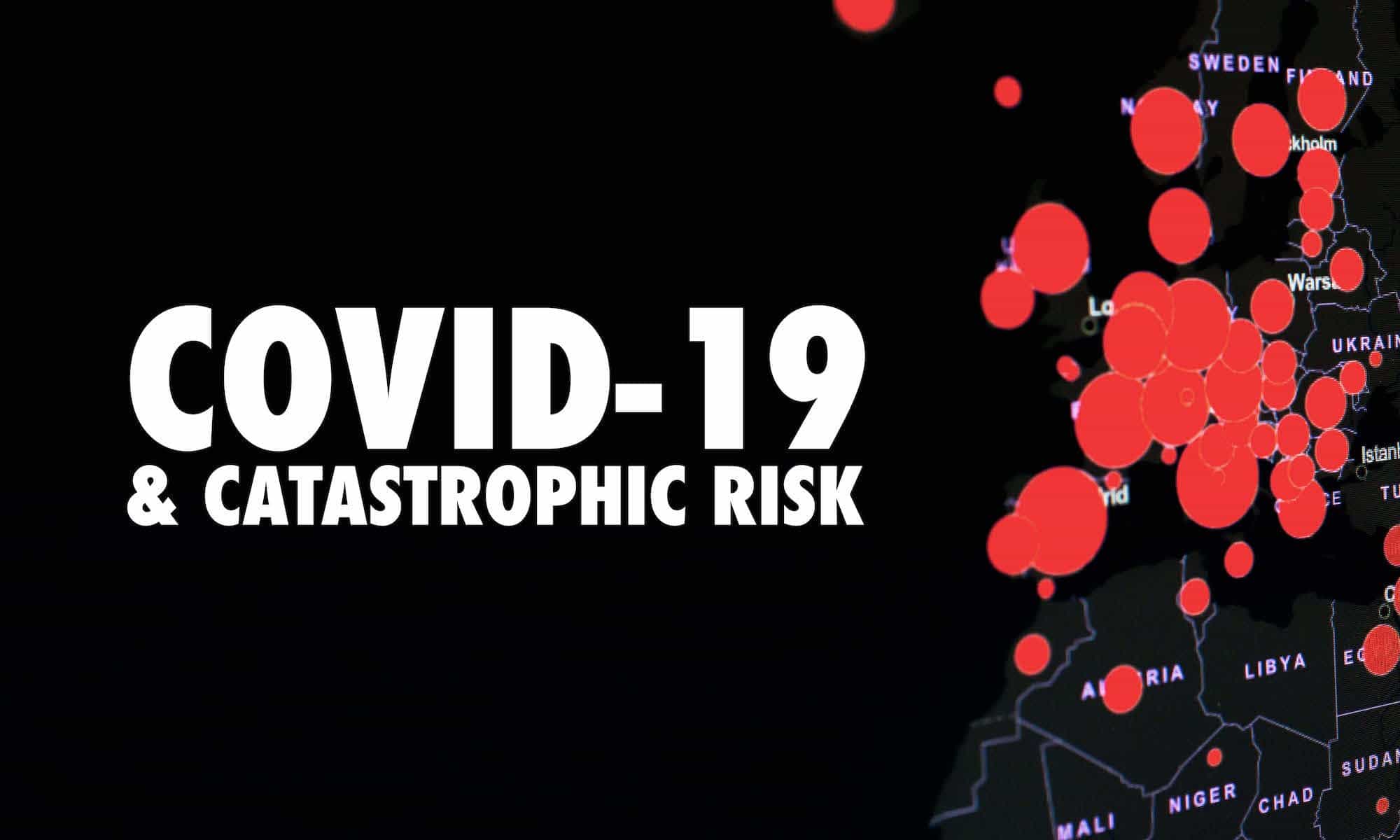COVID-19 & Catastrophic Risk

Contents
What the experts are saying
The viral disease known as COVID-19 has claimed hundreds of thousands of lives, devastated the global economy and brought much of the world to a virtual standstill. Sluggish and insufficient government responses have hugely exacerbated the damage. And yet for researchers and modelers, the outbreak of a pandemic — as well as our underpreparedness for such an event — came as no surprise. Given the potential consequences, why didn’t we plan ahead?
As we begin to rebuild, it’s important to consider the failures and mistakes that helped fuel this crisis. What can we learn from COVID-19 about pandemic preparedness, and preparedness for other catastrophic risks? We asked experts from a variety of fields — risk management, medicine, biology, engineering and more — what they had to say. Browse their answers below.
Click on a name to read each expert’s full response:
Background information
The Disease
COVID-19 is an infectious disease caused by the SARS-CoV-2 virus (severe acute respiratory syndrome coronavirus 2), a novel coronavirus. Coronaviruses are a large family of viruses that occur in humans and animals, and it is believed that the SARS-CoV-2 virus originated in bats.
The most common symptoms of COVID-19 are fever, tiredness, and dry cough. Other symptoms may include aches and pains, nasal congestion, runny nose, sore throat and diarrhea. Roughly 80% of people with COVID-19 recover without needing special treatment. Around 1 in 6 people becomes seriously ill and develops difficulty breathing. Older people, as well as those with pre-existing medical conditions such as high blood pressure, diabetes or heart problems, are more likely to develop serious symptoms.
To date, research suggests that SARS-CoV-2 is transmitted primarily through respiratory droplets from the nose or mouth of an infected person. It is possible to contract the virus by directly inhaling these droplets, or by touching a surface where droplets have landed and then touching the eyes, nose or mouth.
Sources:
https://www.cdc.gov/coronavirus/2019-ncov/cases-updates/summary.html#background
https://www.who.int/news-room/q-a-detail/q-a-coronaviruses
The Pandemic
The current COVID-19 outbreak began in the city of Wuhan, China — a transportation hub with a population of 11 million. By the end of December 2019, doctors had seen dozens of patients with a form of viral pneumonia that did not respond to treatment. By this point, estimates suggest that as many as 1,000 people were already infected.
In the first 3 weeks of January, before travel was restricted, roughly 7 million people left Wuhan. On January 20th, the first cases outside China appeared in Japan, Thailand and South Korea. On January 21st, the first U.S. case was reported in Washington State. On January 24th, the first European cases were reported in France. By the end of January, when Wuhan was placed under lockdown, outbreaks were growing in 30 cities in 26 countries.
By March 1st, Italy, Iran and South Korea were each reporting thousands of cases. On March 11th, the World Health Organization declared COVID-19 a pandemic. By March 17, all 50 U.S. states were reporting cases.
Sources:
https://www.nytimes.com/interactive/2020/03/22/world/coronavirus-spread.html
Further Resources
Additional COVID-19 materials from sources we trust:
Health Security Headlines Newsletter | John Hopkins University Center for Health and Security
National Coronavirus Response: A Roadmap to Reopening | American Enterprise Institute
Ready or Not 2020: Protecting the Public’s Health from Diseases, Disasters and Bioterrorism | Trust for America’s Health
COVID-19 Resource Center | Center for Infectious Disease Research and Policy
Coronavirus Disease Resources | World Health Organization
Coronavirus Series | ProPublica
Coronavirus Tech Report Newsletter | MIT Technology Review
Coronavirus Outbreak Resources | The New York Times
Coronavirus Forecasts | Metaculus
About the Future of Life Institute
The Future of Life Institute (FLI) is a global think tank with a team of 20+ full-time staff operating across the US and Europe. FLI has been working to steer the development of transformative technologies towards benefitting life and away from extreme large-scale risks since its founding in 2014. Find out more about our mission or explore our work.
Related content
Other posts about Collection

Introductory Resources on AI Risks

Global AI Policy

Women for the Future

